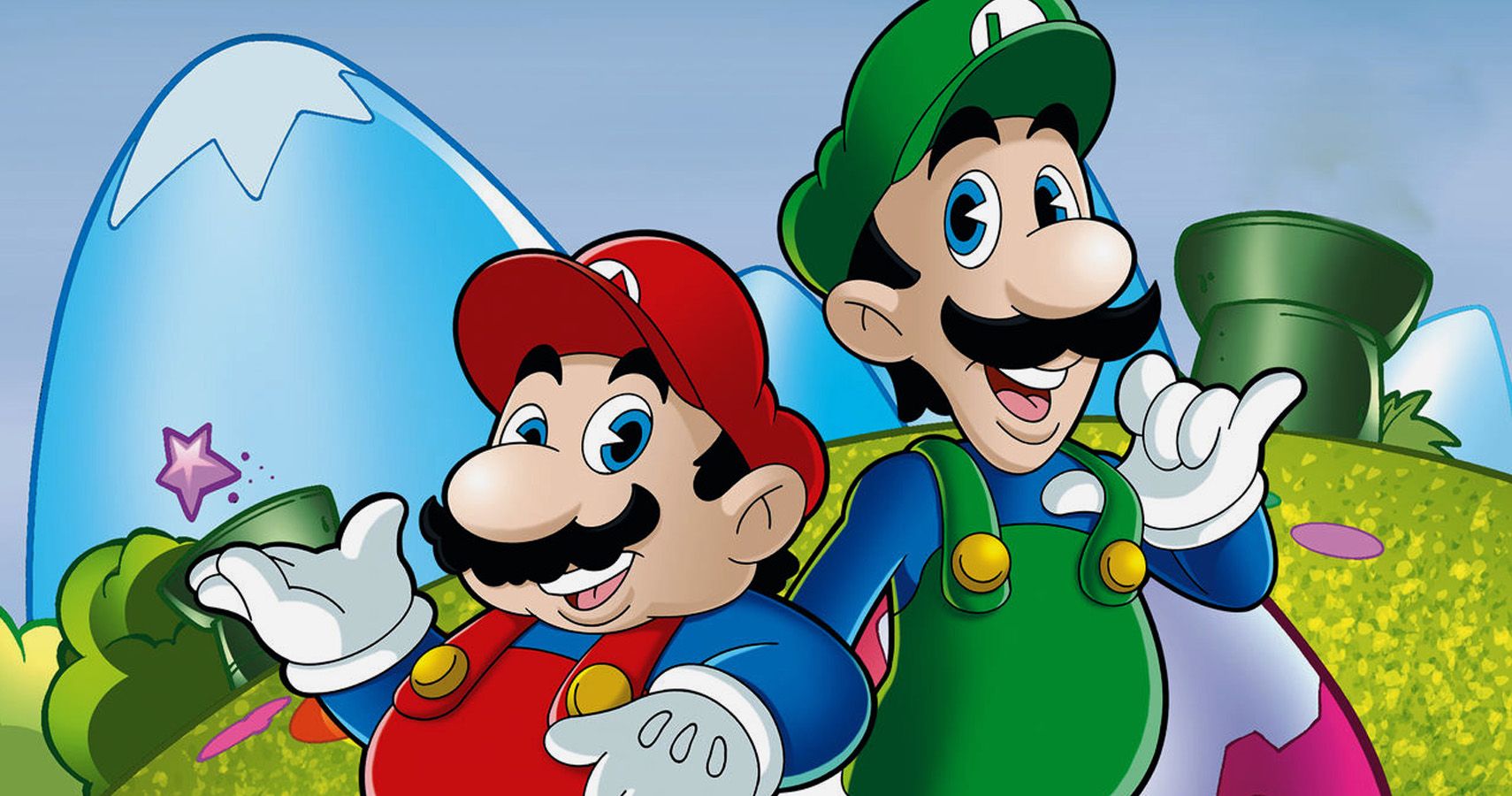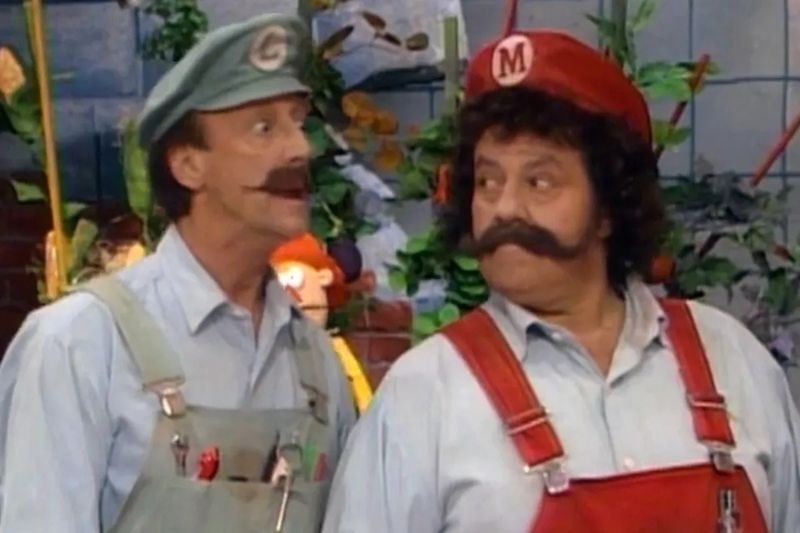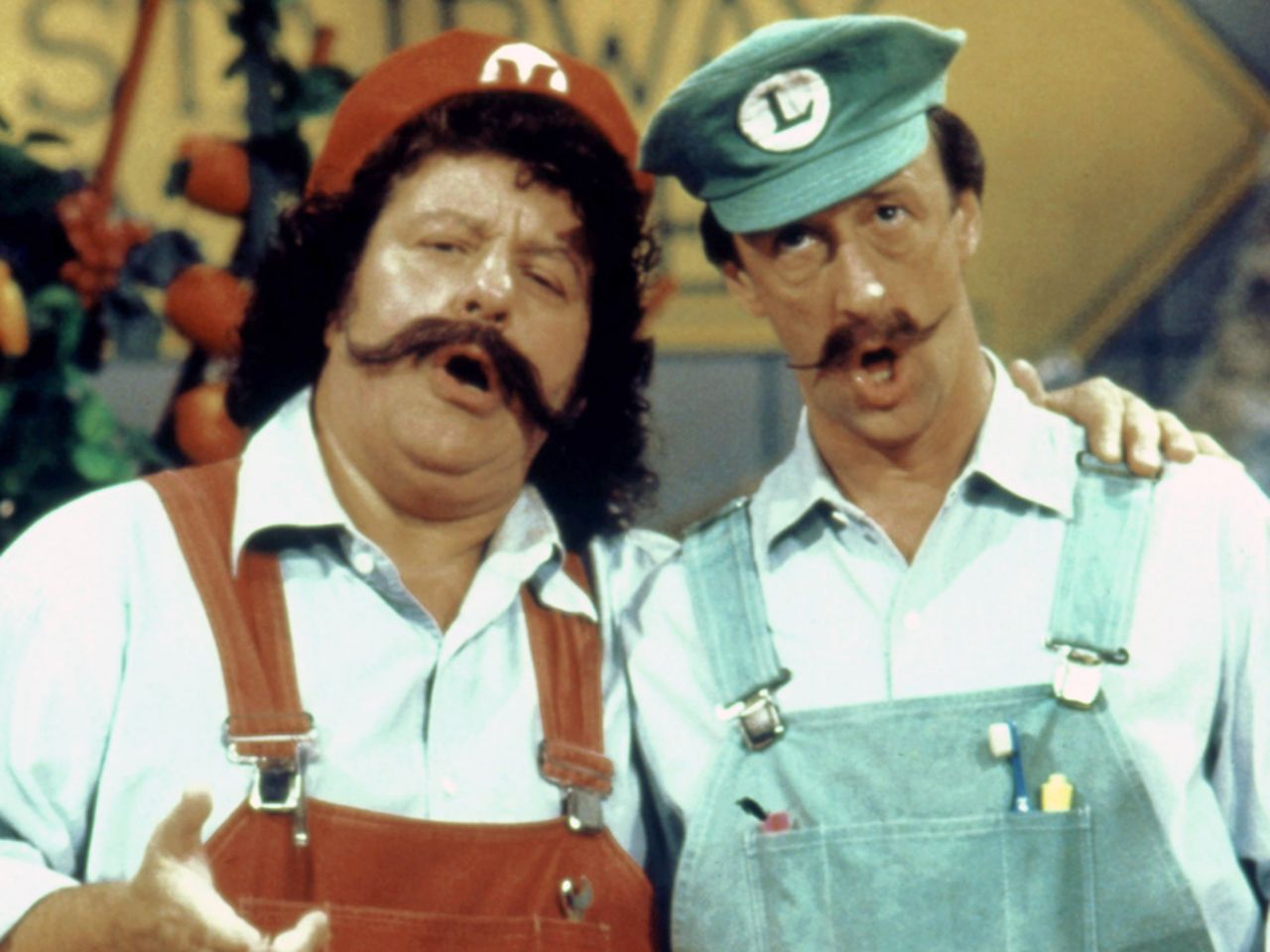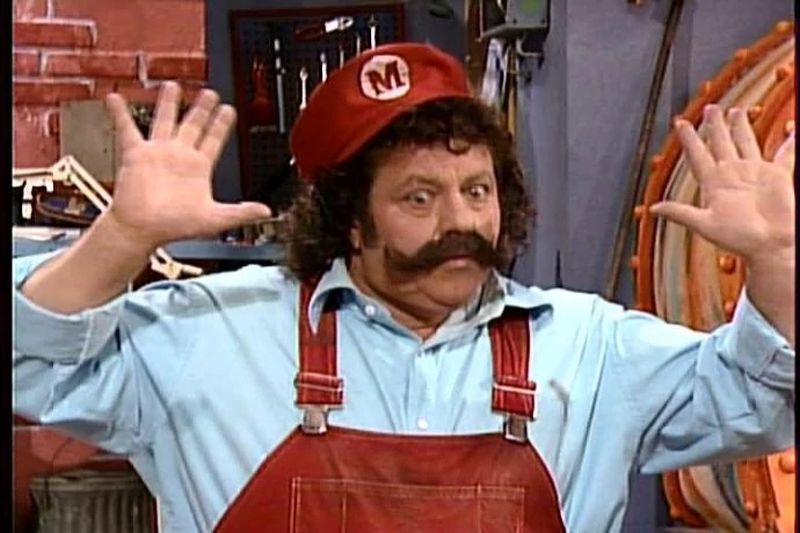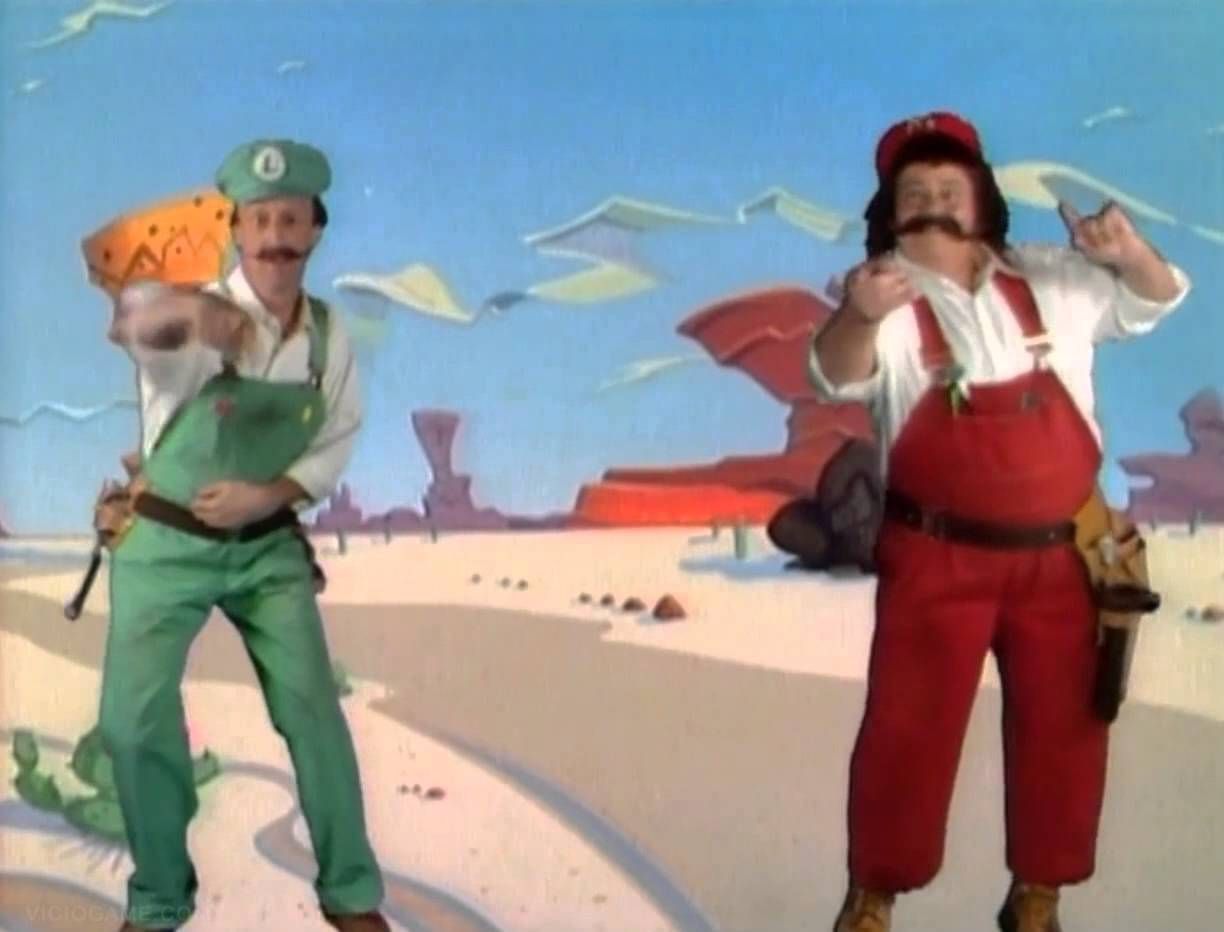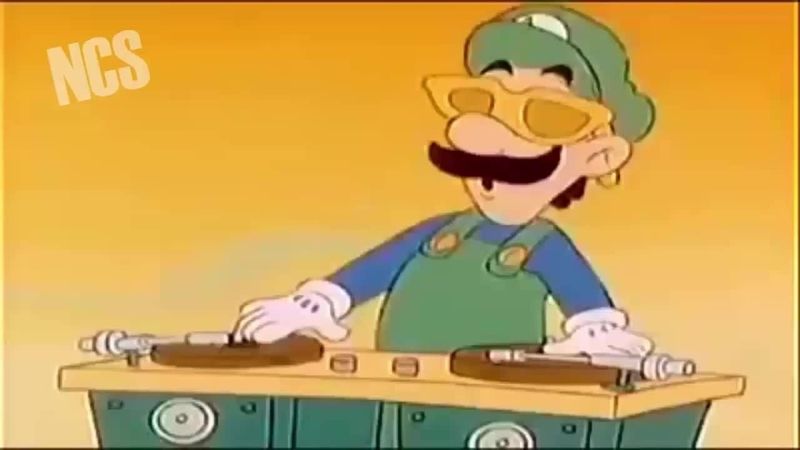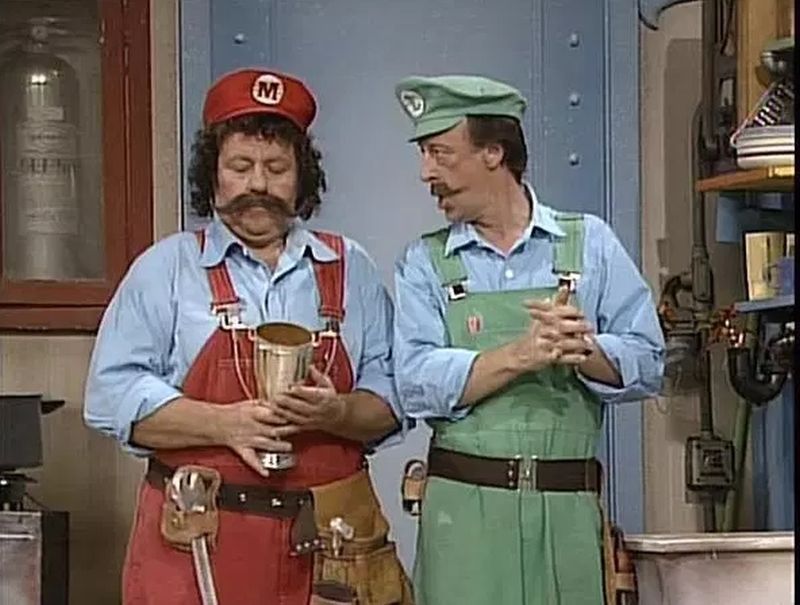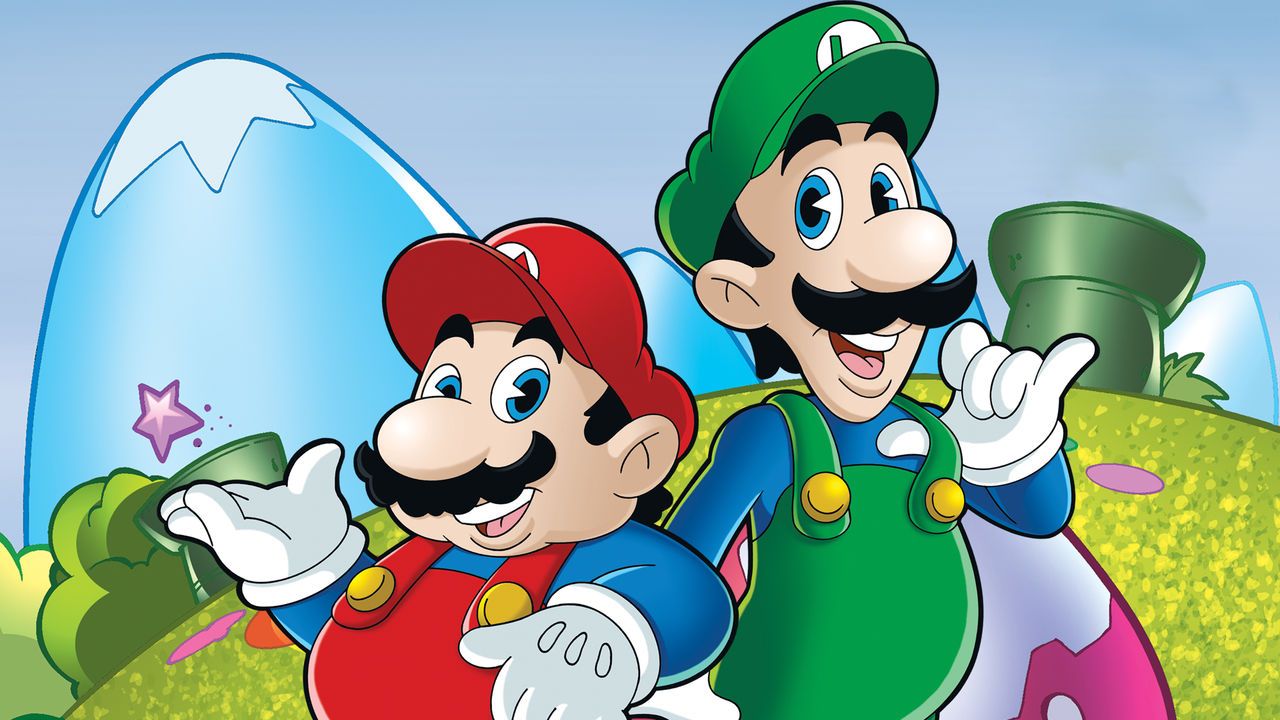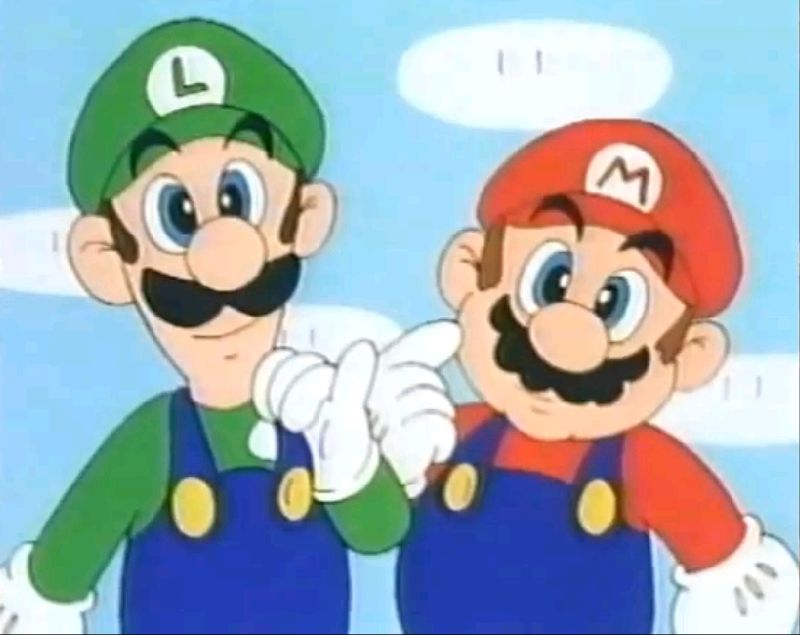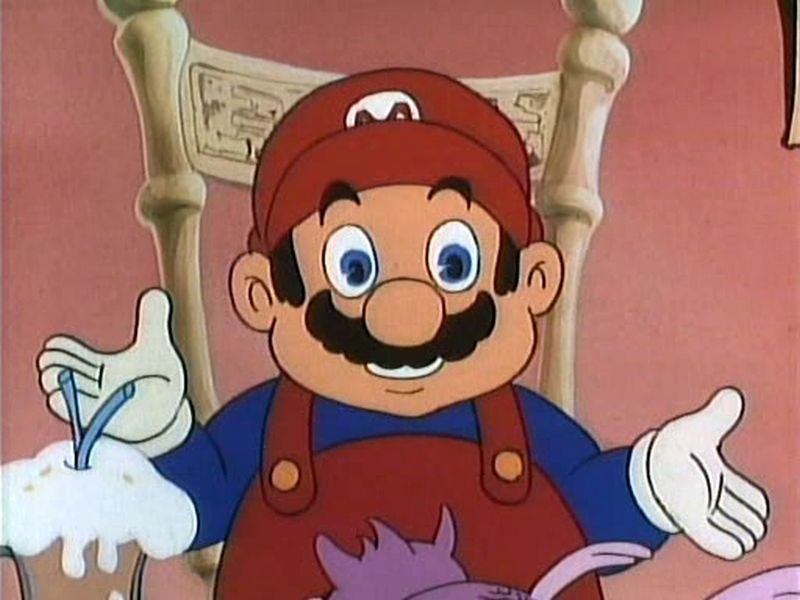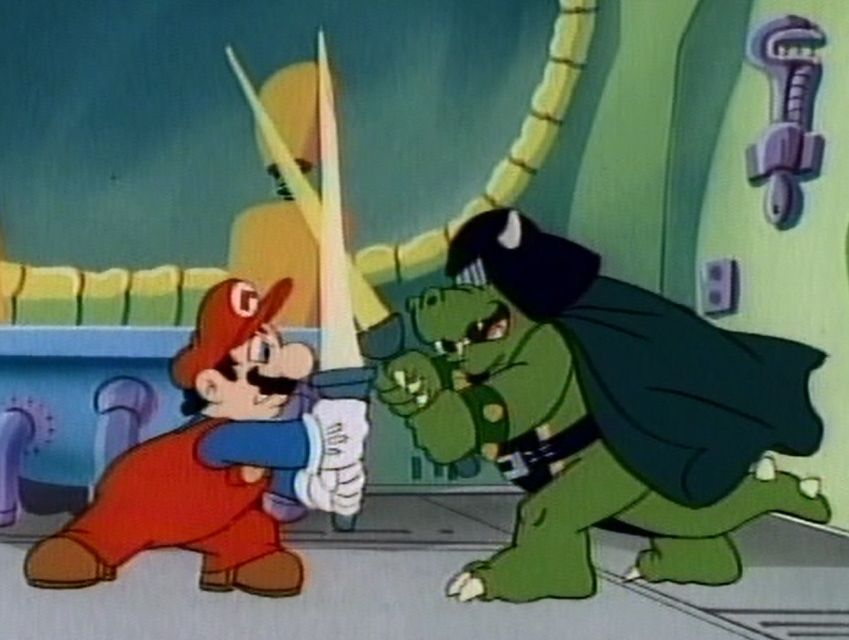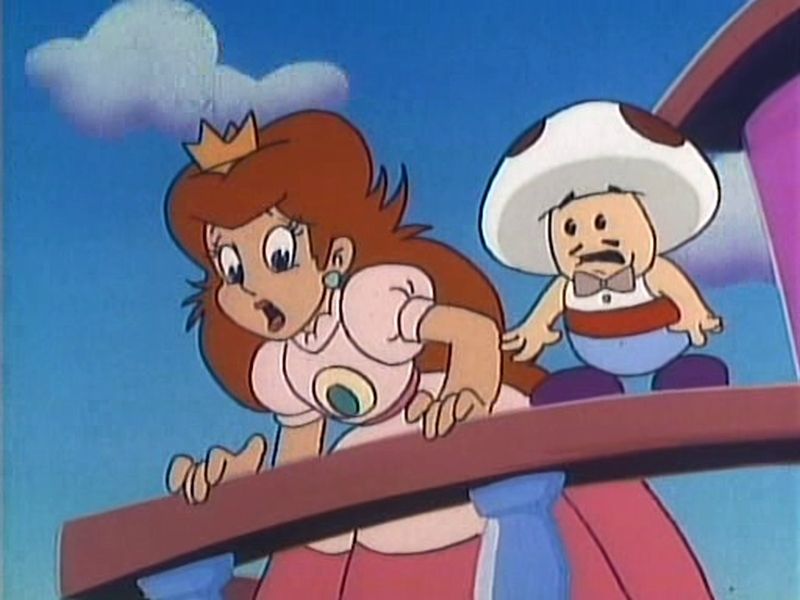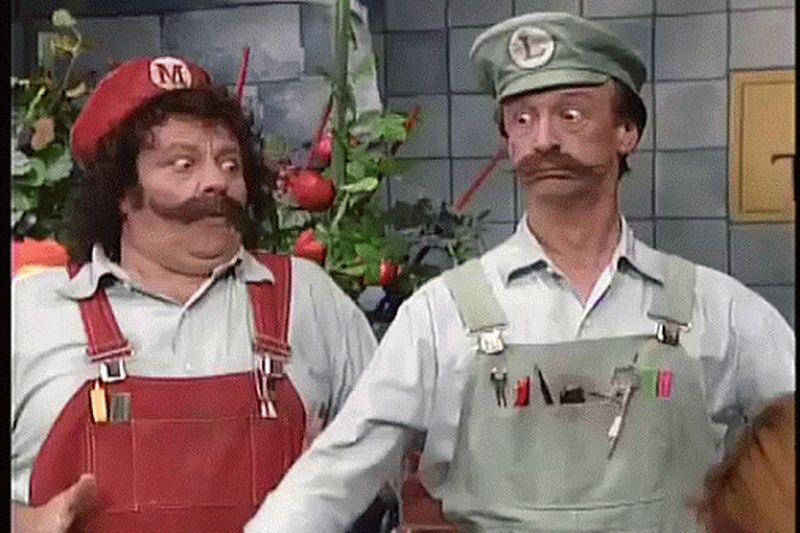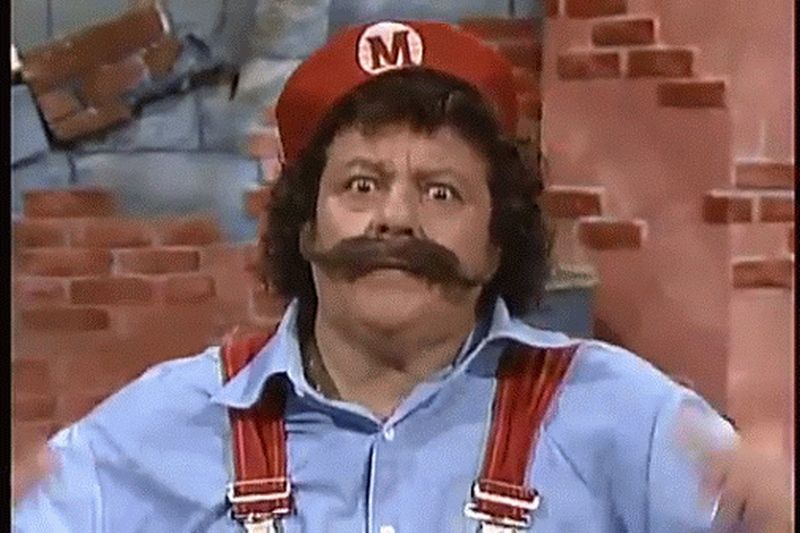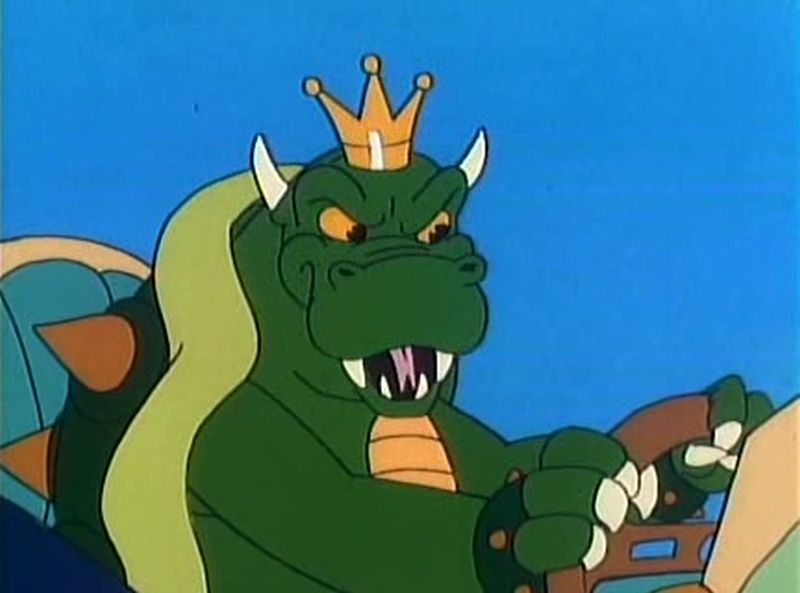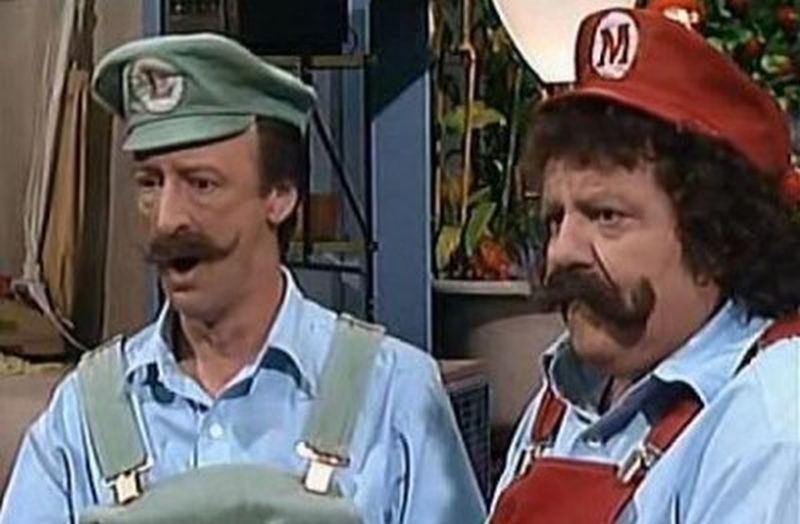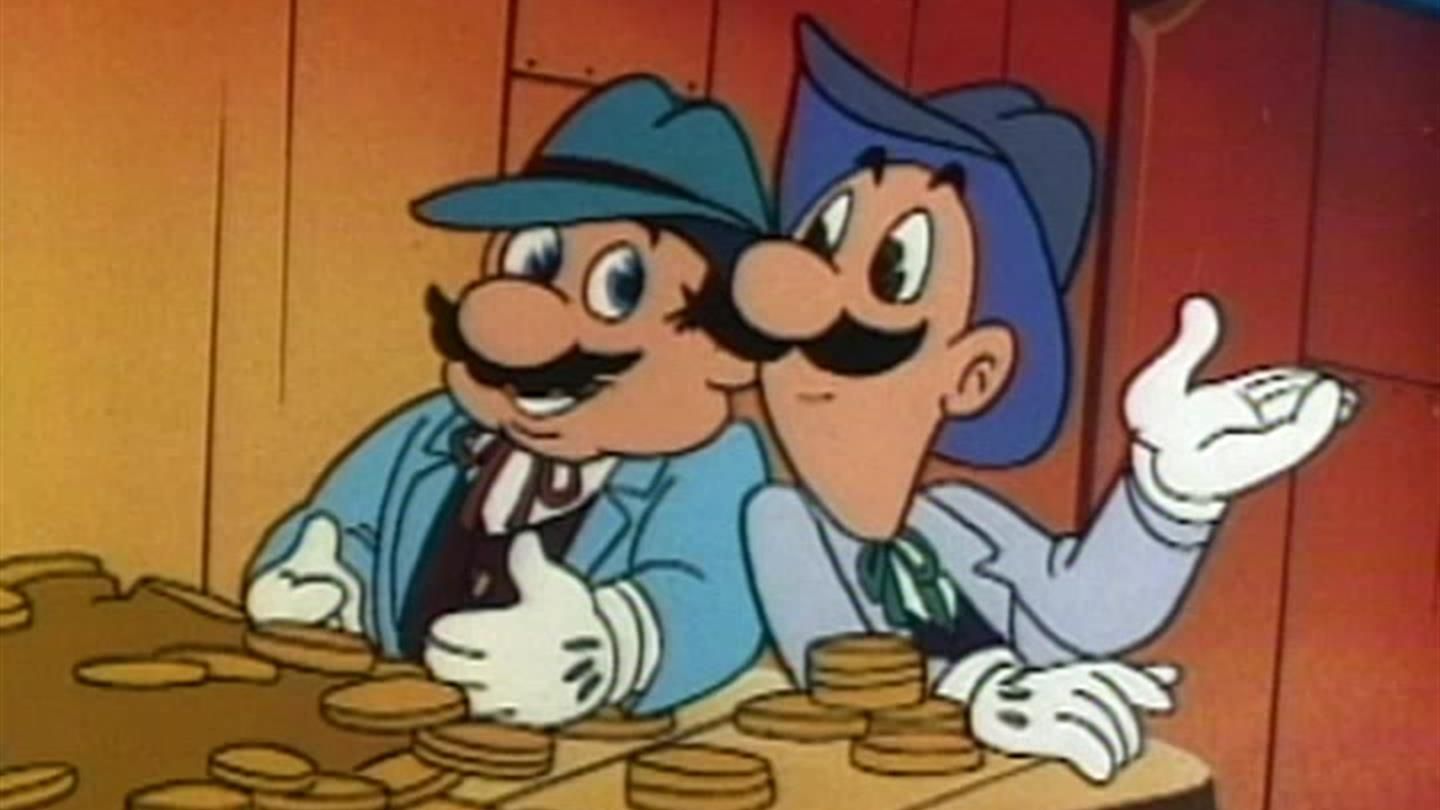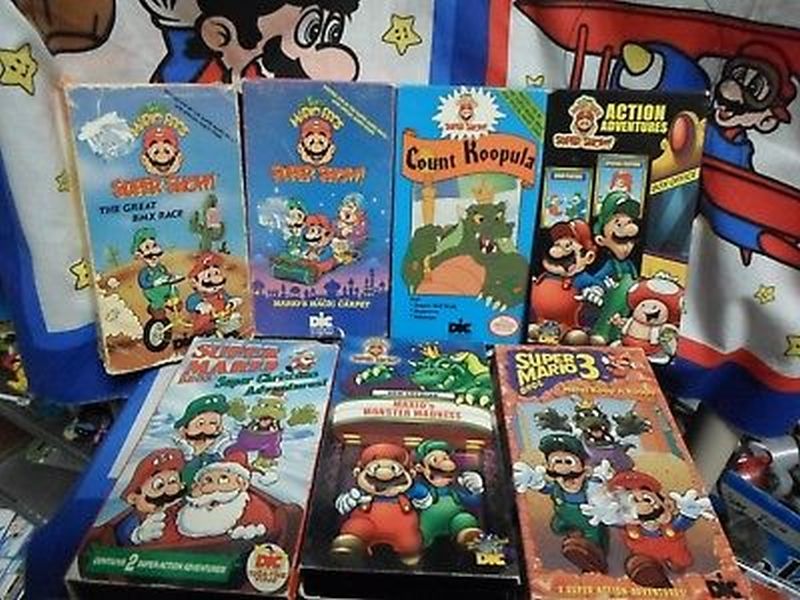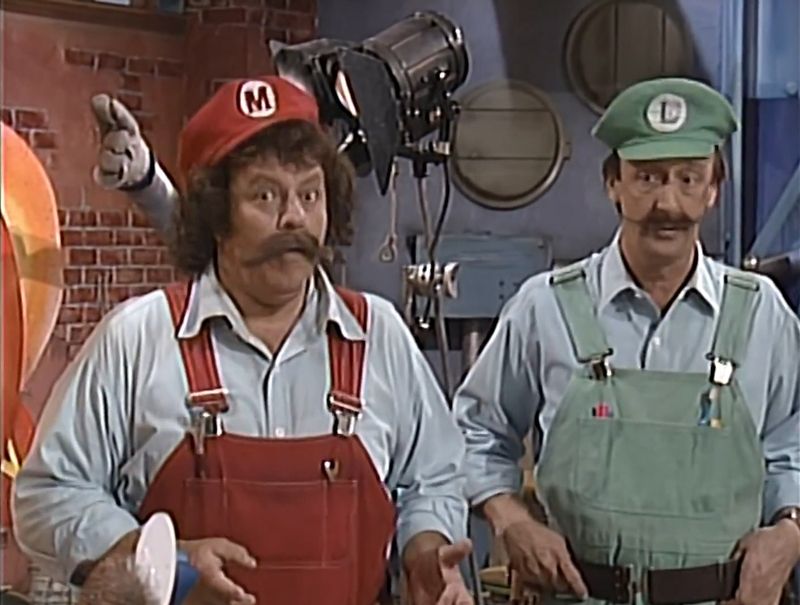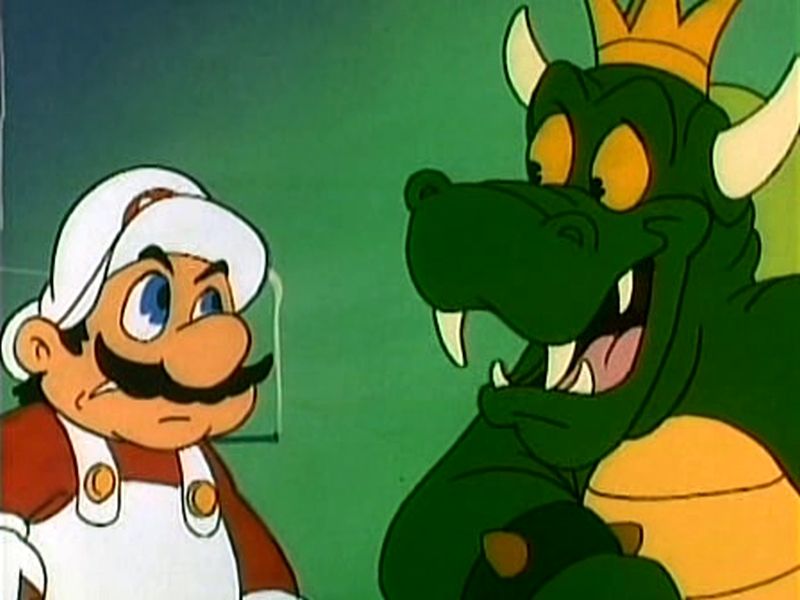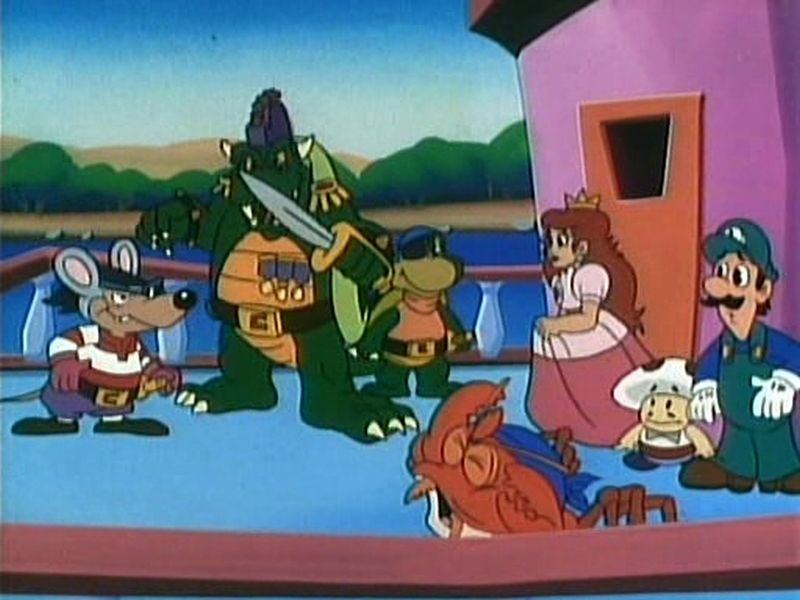The original Nintendo Entertainment System was bundled with Super Mario Bros. and Duck Hunt on a single cartridge. While Duck Hunt was fun, more gamers were interested in the action-platformer. Players took control of the Mario brothers on their quest to defeat Bowser and rescue Princess Toadstool, now known worldwide as Peach.
Nintendo didn't want the fun to end there. They decided to work with DiC Entertainment to bring life to the Mario brothers. On September 4, 1989, The Super Mario Bros. Super Show! was born. The show starred wrestler Captain Lou Albano as Mario and Danny Wells as Luigi. The brothers worked together to solve plumbing problems in real-life, then transported to the Mushroom Kingdom to solve the problem of the week.
While most gamers are used to video games making other appearances in advertisements, cartoons, comics, and novels, it was considered a new phenomenon in the late 80s and early 90s. When caretakers demanded that kids stop playing video games, fans could watch their favorite characters on tv. The show helped kids learn more about their favorite worlds without holding a controller.
Kids may have enjoyed the Super Show, but weren't aware of everything that happened off-screen. They didn't understand the subtle references at the time. Many believed they were watching Mario and Luigi have fun with their friends, but didn't realize the show had more in common with the video games they originated from.
Our list compiles some of the lesser-known details you may not have realized were going on behind-the-scenes. Even if you thought you knew everything about Mario, you might not know as much about the live-action skits and cartoons born from the original series.
25 Left A Lasting Impression
The Super Mario Bros. Super Show! aired five days a week. Kids could hop off the school bus and forget their schoolyard troubles while the cartoon aired.
The series aired from September 4, 1989 to December 1, 1989 with 52 episodes total.
Since the show only covered the first two Super Mario Bros. games, this was a significant amount of episodes for a game with little plot. After a little over a year, the series was canceled. At least the video game plotlines improved.
24 Don’t Expect To Find Original Scripts
The live-action segments aired before the cartoons. These segments featured Mario and Luigi getting to know a special guest and helping them figure out a problem. What most viewers don't know is that most of these segments were improvised. According to the Shout! Factory DVD release, Lou and Danny were told the primary plot for each episode. It was up to them to plan out their lines on the fly. Luckily, these segments were always short. Both actors got along well and were able to give a believable performance as the plumbing brothers each week.
23 Did Kids Know The Difference?
Captain Lou was primarily known as a wrestling star in the 80s. He was hired for the show because of his resemblance to Mario, but kids may have known him best as an athlete. In an unusual twist, Lou appeared as a guest star on the Super Show. There was no fancy split screen during this time so neither men could meet.
While Mario kept missing Lou, Luigi met the wrestling star. Kids may have figured out that both men were the same person, but it provided some amusement for viewers.
22 Was A Stepping Stone For More Kids’ Programming
While DiC Entertainment and Nintendo primarily handed the live-action and animated show, there was another company that assisted in production. Saban Entertainment directed the live-action scenes. The name of this business may sound familiar to most.
Saban would later become well-known for adapting the Power Rangers series for Western audiences.
The action scenes in the Super Show weren't as captivating as the series to come, but it shows that Saban always had an interest in bringing fun entertainment to kids.
21 That Song Sounds Familiar
The Super Show's animated segments contained humor, action, and recognizable characters that entertained kids. During each episode's long action sequence, a familiar song would begin to play. These songs were covers of popular songs during the time period. The songs didn't have the same lyrics, but their musical beats were instantly recognizable. When the show was released on DVD, the cover songs were removed due to licensing conflicts. The cover songs were replaced with music from the Super Mario Bros. games.
20 No Home And Work Balance
It was easier to draw the unique worlds showcased in the Super Mario Bros. games. The live-action segments were always the same. The real-life brothers were always shown in the same set. It was a basement that doubled as their workshop and home in Brooklyn, NY.
The real-life segments rarely placed the brothers outside of this basement room. Even the special guests walked in an out of their basement home at all hours. These brothers never separated their personal and home lives. Traveling to the Mushroom Kingdom may have been their only opportunity to get some outside air.
19 Not All Kids Knew Captain Lou
While Danny Wells wasn't as recognizable to children, many knew Lou Albano. He was a wrestling star who started to become famous after appearances on music videos and tv shows. Though he may have experienced fame in North America, other countries weren't interested in the real-life versions of the plumber brothers.
In some countries, the real-life segments were removed.
In their place, a narrator introduced the cartoon segment. Their children never had the opportunity to see the real-life versions of Mario and Luigi.
18 It Predates The Film Reveal
For years, fans believed that the title of the series was a reference to Mario, the red-themed plumber. Luigi was the green-themed brother and only helped Mario. Fans were shocked to learn in the live-action movie that Mario was their last name. The revelation was made much earlier. It was first revealed in the Super Show that Mario was the brother's last name. The reveal is made in "Dance" and "Treasure of the Sierra Brooklyn," which were released years before the film.
17 Went Through A Major Change
The Super Mario Bros. Super Show! is a long title, but recognizable. Viewers knew it referred to the live-action show with an animated segment that featured either the Mario Brothers or the Legend of Zelda. After the original series ended, the show re-used the animated segments for a new show called Club Mario.
Re-runs of the cartoons would air, but new live-action segments were aired. Mario and Luigi were replaced with obsessed fans of the video game. They "aired" the cartoon portions to make it more accessible to kids.
16 Combined Several Things Kids Loved
The early Super Mario Bros. games didn't focus on the plot. The games were more focused on the action-platforming than a storyline. This was a primary reason DiC wanted to adapt the game into a tv show. They could be more creative but had to come up with several unique storylines.
The writers decided to create parodies of kids' favorite movies and tv shows at the time.
With a show that combined several of kids' interests, it was no wonder the Super Show became so popular.
15 Did They Blame It On Technical Limitations Again?
While her name was always intended to be Peach, Princess Toadstool went through many changes. Due to the technical limitations of the NES, she was a brunette instead of blonde.
The animated series also kept this trait. Though the animators could have kept Peach's blonde hair, they opted to keep her hair the same as in the game. This may have been to emphasize her video game appearance or being unaware of her blonde heritage. Peach's hair color or name was never revised during the late 80s series.
14 A Risky Move
Though Nintendo has become a household name in past decades, the company wanted people to know about Mario and Luigi. The Super Show was meant to bring attention to their leading stars. According to Danny, who portrayed Luigi, the show wasn't widely publicized. He stated that the show suddenly began airing one day at 3PM.
Luckily, the show quickly became popular within a few weeks. As long as the show remained airing at the same time every day, kids would keep tuning in, Monday through Friday. Not advertising the show before it aired was a risky move, but it paid off.
13 Lou Expanded Mario’s Role
DiC and the leading actors of the Super Mario show knew how popular their cartoon had become. Fans were beginning to become more familiar with the Mario universe.
Captain Lou, who played Mario, ran a series of public service announcements on the WBBS Philly tv station.
His various public service announcements were meant to discourage kids from partaking in illegal activities, causing harm, and not to commit crimes. Lou hoped that as Mario, kids would take his message to heart.
12 Wart Who?
The animated segments used characters and environments from the first two Super Mario Bros. games. Fans could point out which characters appeared in the games. They especially knew the evil King Bowser, the leader of the Koopa Troop.
Bowser was always the primary antagonist trying to take over the Mushroom Kingdom. Even though the games used elements from the second video game, it never featured its villain, Wart. The showrunners may have assumed that kids found Bowser more recognizable than the giant frog king, Wart.
11 The Brothers Worked Overtime
Mario and Luigi didn't have voices in the original NES games, so DiC had some creativity in how the plumber brothers sounded. It was up to the live-action actors to provide their voices in the animated segments. Many fans were surprised that the show kept this continuity in-tact. If the brothers sounded different from their live-action actors, it would have ruined the immersion for young fans. Luckily, Lou and Danny performed both roles without any issues. They didn't want to let down fans.
10 Mario And Luigi’s Services Weren’t Cheap
DiC Entertainment had a difficult time convincing Nintendo to let them use their characters. They weren't interested in creating original characters. The entertainment company wanted to bring Mario and Luigi to tv sets around the country.
Nintendo eventually agreed but forced DiC to pay royalties to use their characters.
According to then-CEO Andy Heyward, "They finally agreed, but we have to pay them a royalty, and a very healthy one, which is unheard of in the kid business. It's always the other way around."
9 Nestle Quik Suddenly Surged In Popularity
The Super Mario Bros. Super Show! aired every weekday, but some kids wanted to watch their favorite program on the weekends. DiC Video and Paramount released a few of the most popular episodes on VHS tapes. Popular children's brands like Nestle Quik eventually collaborated with the show. Kids could mail-in many labels for a special VHS tape of the show. There were three special VHS tapes they could collect, which meant that kids had to ask their parents for more Nestle Quik.
8 A Unique Show At The Time
DiC Entertainment was one of the largest creators of animated films. They produced several animated adaptations of video games, including Sonic the Hedgehog, Double Dragon, and all three Super Mario shows. The company would also later localize anime series for Western fans.
The Super Mario Bros. Super Show! was their only show with live-action and animated segments. Though the show was popular with fans of all ages, DiC may have been interested in focusing more on the cartoons instead of real-life actors.
7 A Happy Working Relationship
DiC Entertainment has had a history with questionable North American anime localizations. Fans may have assumed that such a history with popular brands was common.
Nintendo and DiC enjoyed a positive relationship while the show was airing.
In the book From Captain N to Sonic Underground: Behind Video Games' Earliest Cartoons DiC Executive Robby London stated "Nintendo was reasonable, professional and good to deal with. Their America office seemed quite capable of speaking definitively on behalf of their Japanese owners, and I don’t remember any problematic disputes with Nintendo."
6 Wasn’t Known For Its Plot
When gamers think back to the first Super Mario Bros. game, they can remember the action platforming gameplay. They recognize the first enemy they ever faced before grabbing the magic mushroom. What falls short is the plot. Mario and Luigi have to rescue Princess Toadstool, and then the game ends.
DiC Entertainment didn't mind that the games didn't focus on a plot. They could have more creativity when writing the cartoon portions of the show. Fans couldn't complain about a conflict in a plot that barely existed.

